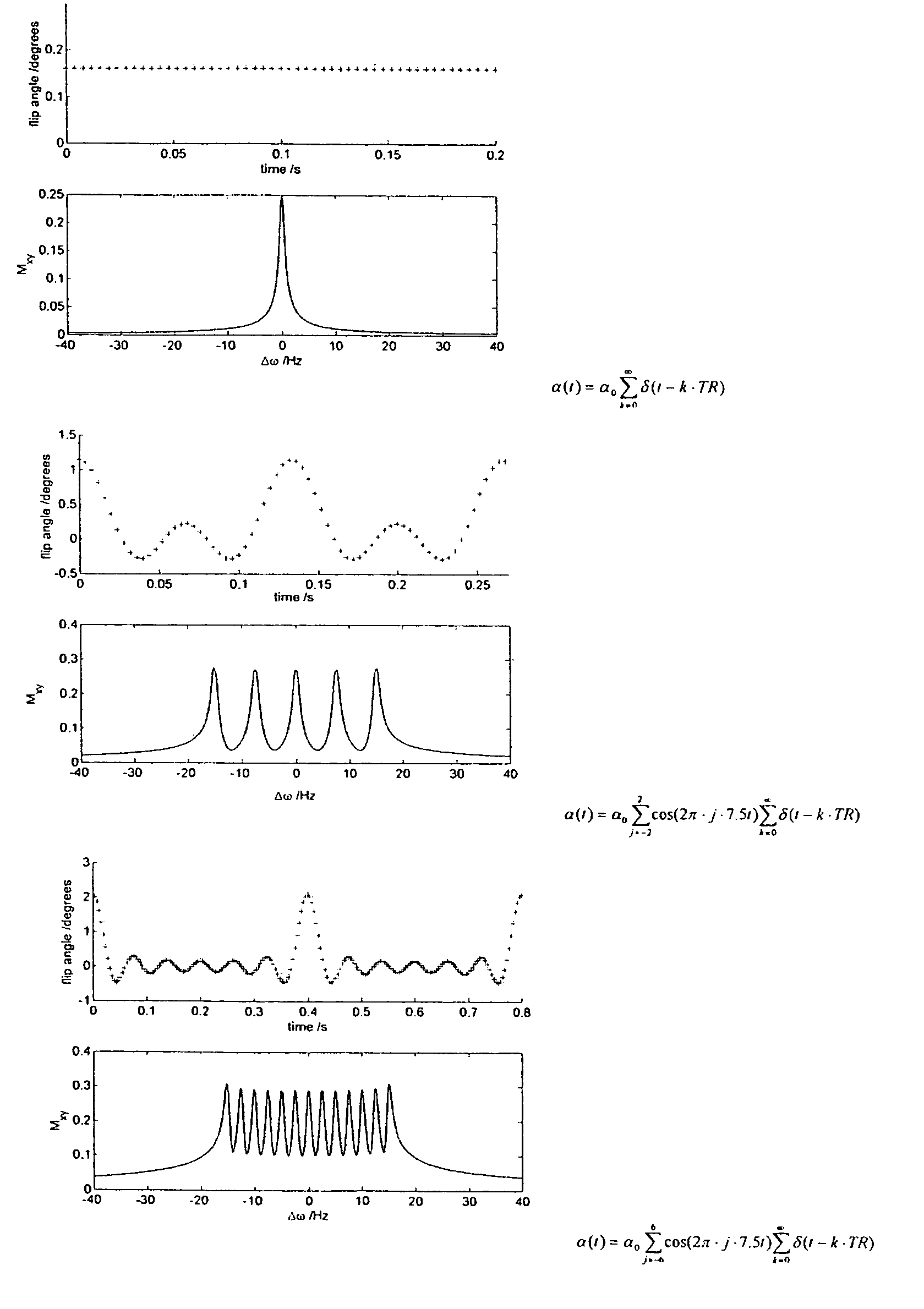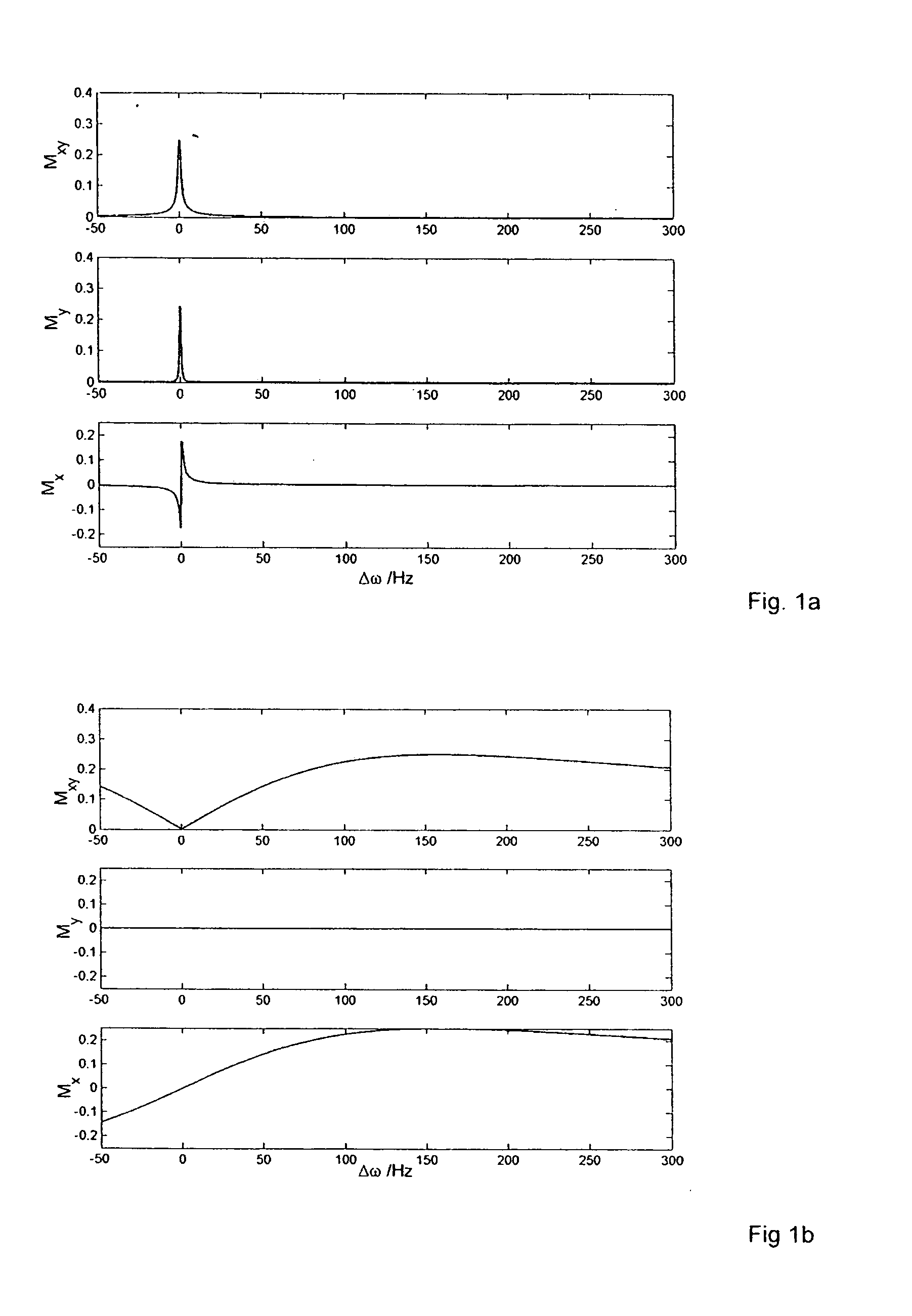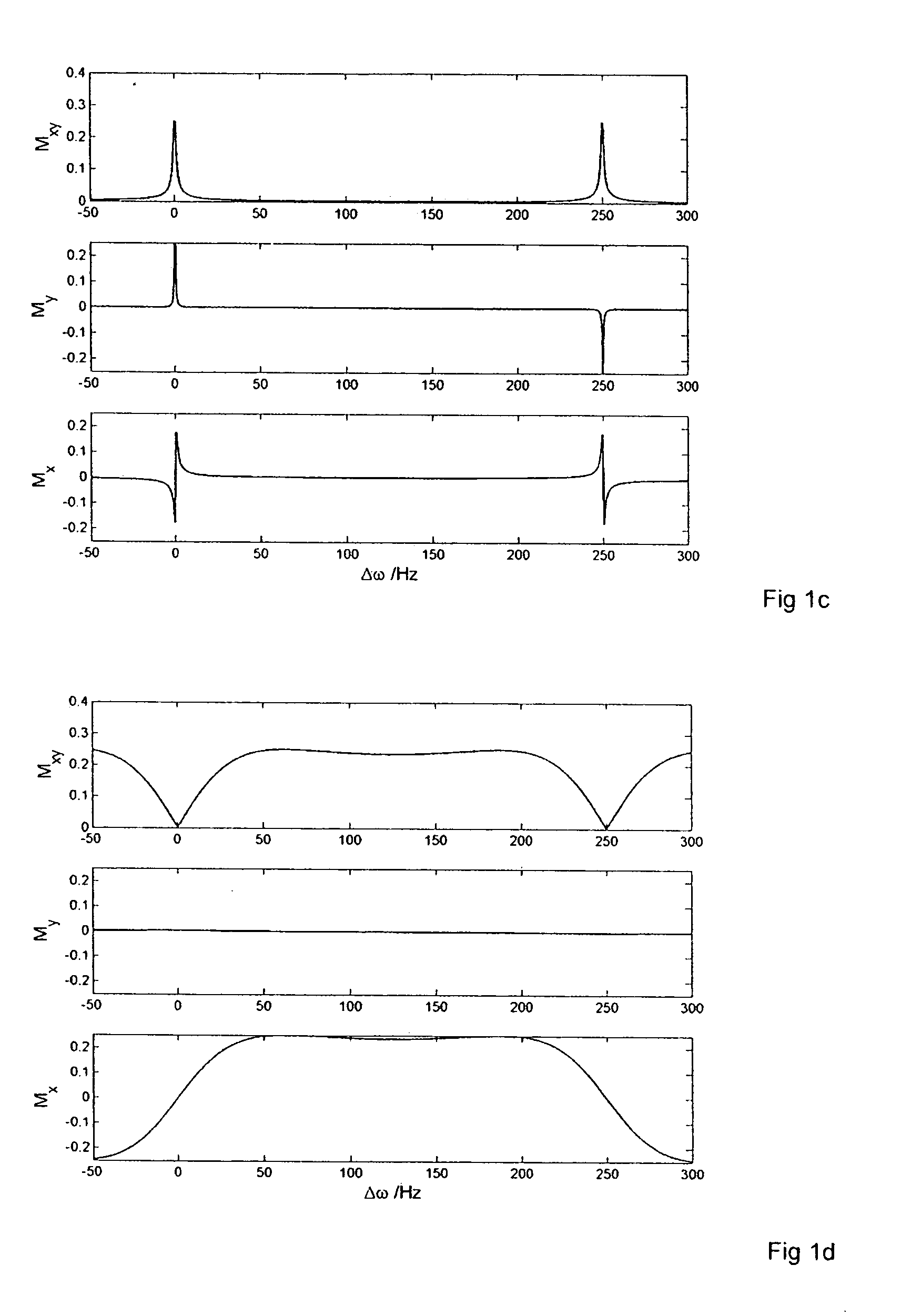Measuring method of spatially resolved frequency selective images
a spatial resolution and selective image technology, applied in the field of spatial resolution spectroscopic recordings, can solve the problem of time-consuming and laborious measurement schemes
- Summary
- Abstract
- Description
- Claims
- Application Information
AI Technical Summary
Benefits of technology
Problems solved by technology
Method used
Image
Examples
Embodiment Construction
[0060]The exemplifications set out herein are not to be construed as limiting the scope of this disclosure or the scope of this invention in any manner.
[0061]The nuclear magnetic resonance imaging system shown in FIG. 2 includes a set of main coils 10 whereby a steady, spatially uniform magnetic field is generated. The main coils are constructed, for example, in such a manner that they enclose a tunnel-shaped examination space. A patient to be examined is slid on a table into this tunnel-shaped examination space.
[0062]The magnetic resonance imaging system also includes a number of gradient coils 12, whereby magnetic fields exhibiting spatial variations, notably in the form of temporary gradients in individual directions, are generated so as to be superposed on the uniform magnetic field. The gradient coils 12 are connected to a controllable power supply unit 21. The gradient coils 12 are energized by application of an electric current by means of the power supply unit 21. The streng...
PUM
 Login to View More
Login to View More Abstract
Description
Claims
Application Information
 Login to View More
Login to View More - R&D
- Intellectual Property
- Life Sciences
- Materials
- Tech Scout
- Unparalleled Data Quality
- Higher Quality Content
- 60% Fewer Hallucinations
Browse by: Latest US Patents, China's latest patents, Technical Efficacy Thesaurus, Application Domain, Technology Topic, Popular Technical Reports.
© 2025 PatSnap. All rights reserved.Legal|Privacy policy|Modern Slavery Act Transparency Statement|Sitemap|About US| Contact US: help@patsnap.com



